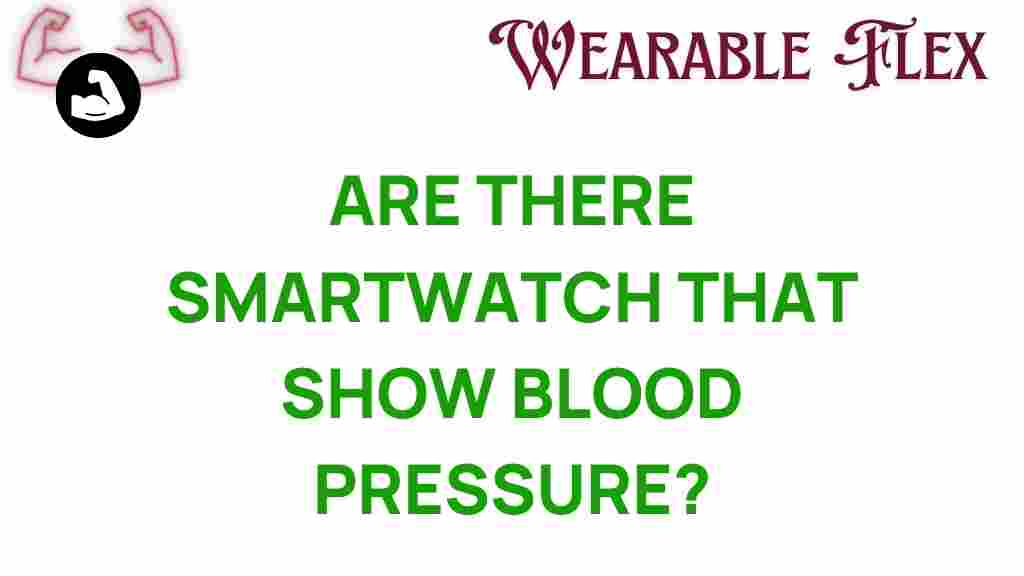Unveiling the Mystery: Do Smartwatches Really Measure Blood Pressure?
In recent years, smartwatches have evolved from simple fitness trackers to sophisticated health monitoring devices. One of the most talked-about features is their ability to measure blood pressure. But how accurate are these claims? In this article, we’ll delve into the functionality of smartwatches, explore how they measure blood pressure, and discuss their reliability.
Understanding Smartwatches and Health Monitoring
Smartwatches are more than just a fashion accessory; they have become essential tools for health and fitness enthusiasts. These devices can track various health metrics, including heart rate, sleep patterns, and activity levels. However, the ability to measure blood pressure has garnered significant attention.
How Do Smartwatches Measure Blood Pressure?
Most smartwatches do not measure blood pressure in the same way a traditional sphygmomanometer does. Instead, they often use indirect methods involving sensors that monitor heart rate and other indicators. Here’s a breakdown of how this works:
- Optical Sensors: Many smartwatches use photoplethysmography (PPG) sensors to measure heart rate. These sensors can also provide some insights into blood flow, which can be correlated with blood pressure.
- Calibration: Some smartwatches require users to calibrate the device with a traditional blood pressure monitor. This process helps the smartwatch provide more accurate readings over time.
- Algorithms: Smartwatches utilize complex algorithms to estimate blood pressure based on heart rate variability and other physiological data.
Step-by-Step Process to Measure Blood Pressure with a Smartwatch
If you’re interested in using your smartwatch to monitor blood pressure, follow these steps:
- Choose the Right Smartwatch: Ensure your smartwatch has the capability to measure blood pressure. Popular models include the Apple Watch and the Samsung Galaxy Watch series.
- Set Up Your Device: Download the accompanying health app on your smartphone. This app will help you track your measurements over time.
- Calibrate: If required, calibrate your smartwatch with a traditional blood pressure monitor. Follow the instructions provided by the manufacturer.
- Take a Reading: When ready, sit comfortably and follow the prompts on your smartwatch to take a reading. It’s best to do this when you are relaxed and at rest.
- Review Results: After the reading is complete, review your results in the health app. Some smartwatches will also provide trends over time.
Accuracy and Reliability of Smartwatch Blood Pressure Measurements
While many smartwatches claim to measure blood pressure, the accuracy can vary significantly. Here are some factors to consider:
- Calibration: Regular calibration with a traditional blood pressure monitor can improve accuracy.
- User Technique: The position of the wrist, body posture, and the time of day can affect readings.
- Device Quality: Higher-end models often provide more accurate readings compared to budget options.
Common Troubleshooting Tips
If you find that your smartwatch is giving inconsistent blood pressure readings, consider the following troubleshooting tips:
- Ensure Proper Fit: Make sure your smartwatch is snug but not too tight. A loose fit can lead to inaccurate readings.
- Check Battery Level: Low battery levels can affect the performance of the sensors.
- Update Software: Regularly check for software updates for your smartwatch and health app.
- Recalibrate: If readings seem off, recalibrate your device with a traditional blood pressure monitor.
Pros and Cons of Using Smartwatches for Blood Pressure Monitoring
As with any health technology, there are both advantages and disadvantages to using smartwatches for blood pressure monitoring.
- Pros:
- Convenience: Easy to check blood pressure anytime, anywhere.
- Trends: Many smartwatches can track trends over time, helping users identify patterns.
- Integration: Health data from your smartwatch can often integrate with other health apps.
- Cons:
- Accuracy: Smartwatches may not be as accurate as traditional methods.
- Dependence on Calibration: Regular calibration is necessary for reliable readings.
- Battery Life: Frequent usage can drain the battery, affecting performance.
Conclusion: Are Smartwatches a Reliable Blood Pressure Monitoring Tool?
In conclusion, smartwatches can be a useful tool for monitoring blood pressure, but they should not replace traditional methods. The accuracy of smartwatch readings can vary, and regular calibration is essential for reliable results. If you’re considering a smartwatch for blood pressure monitoring, choose a reputable model and stay informed about its capabilities and limitations. For more detailed information on the latest models, visit [this external resource](https://www.healthline.com/health/what-is-the-best-smartwatch-for-blood-pressure-monitoring) on health monitoring smartwatches.
Remember, while these devices can provide valuable insights into your health, always consult with a healthcare professional for serious health concerns.
This article is in the category Health and created by WearableFlex Team
